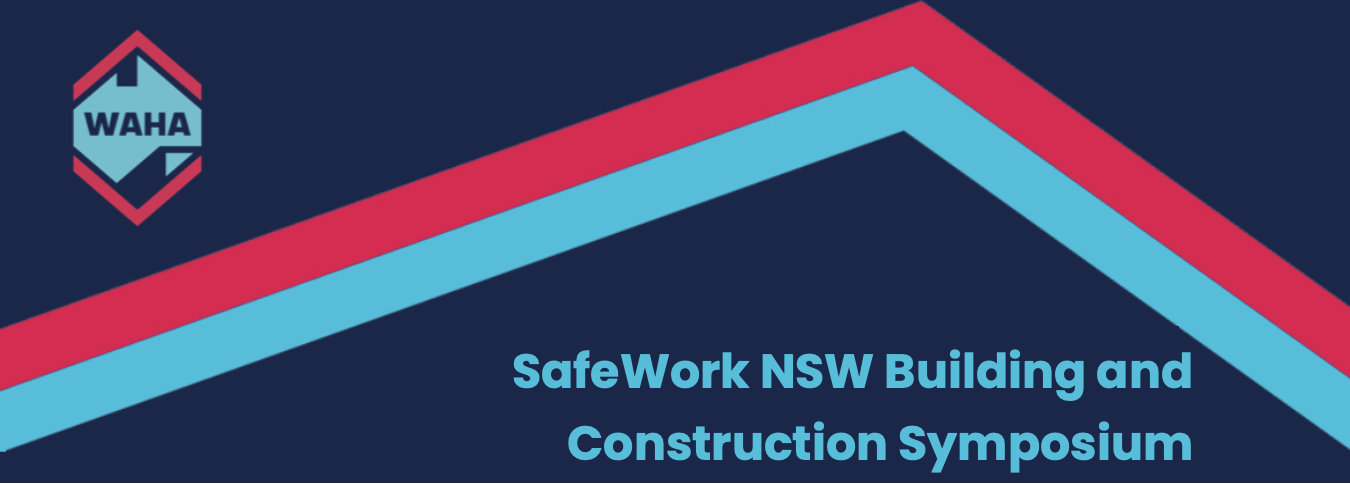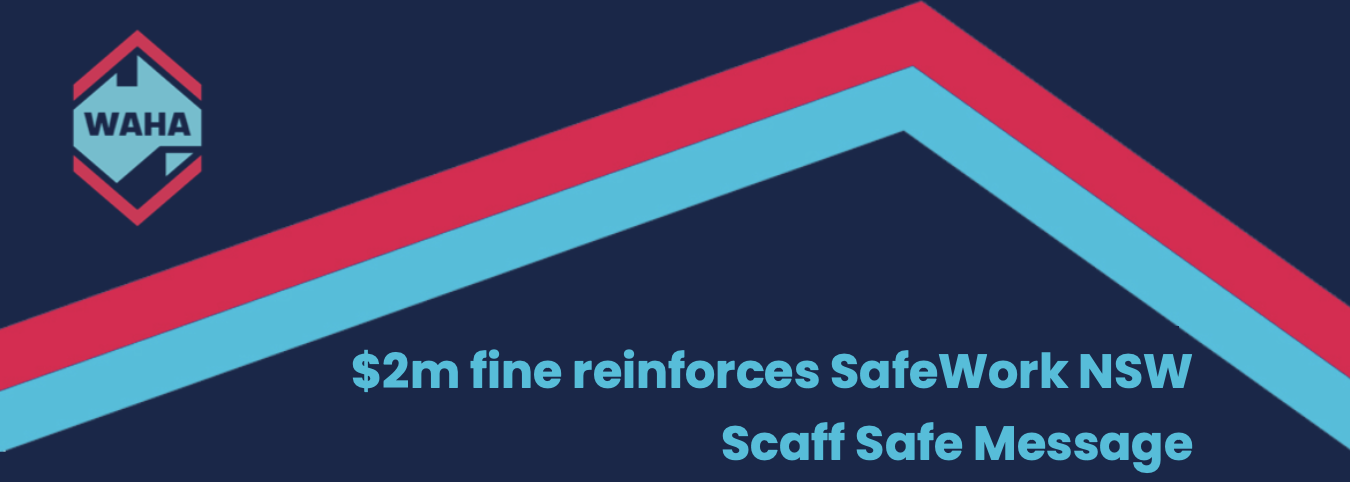The NSW Government’s inaugural Safe Work NSW Building and Construction Symposium was originally scheduled to be a two day event, in Sydney. The WAHA were initially engaged for the Symposium to present on the topic of fall prevention as well as be on the primary panel for a falls from heights workshop. However, due to the COVID-19 pandemic the event was rescheduled twice before being downsized to a primary event in Sydney, with Regional Roadshow events held at Coffs Harbour, Tamworth, Newcastle, Wollongong, Batemans Bay, Wagga Wagga, Orange, and Port Macquarie.
The Symposium finally came together in 2022, and was held at CommBank Stadium Parramatta on the 10th May 2022. The Symposium brought together the Regulator and the building and construction industry to launch the Scaffolding Industry Safety Standard (SISS) as well as conduct workshops to address the ongoing issues around working at heights in NSW.
Scott Barber, Deborah Chick and Ashley Campbell attended the event as SMEs to participate in the break out sessions across three sub-industry areas; residential/house construction (stream 1), multi-storey mixed use (stream 2), and infrastructure (stream 3) provided a forum to address their specific issues, improve safety standards and work with Safe Work NSW.
Participants at the Sydney event agreed that it was a valuable opportunity to engage and consult on WHS issues and attendance resulted in a better understanding of the regulatory landscape. They also found the Scaffolding Industry Safety Standard (SIIS) session valuable as it gave them a better understanding of how to safely manage scaffolding work; and commented that the workshops being split across three sub-industry areas; residential/house construction (class 1), multi- storey mixed use (class 2), and infrastructure provided a forum to address their specific issues, improve safety standards and work with SafeWork NSW. The most popular part of the symposium was the keynote speakers, followed by the networking opportunities, the delivery of the SISS and the falls from heights workshops.
You can read the full report of the SafeWork NSW Building and Construction Safety Symposium Evaluation online here.
Regarding the falls from heights workshops, each stream brainstormed ideas for potential regulatory options to solve this “wicked problem” – the most common cause of traumatic fatalities on NSW construction sites, with this statistic echoed throughout the whole of Australia where an average 12.2% of all workplace fatalities for the last five years running occur from a fall from height. A significant number of suggestions were recorded across all workshops in the afternoon, including:
Regulatory change: increased penalties, demerit point system, specific Safe Work NSW led Working at Heights Forum, permit and licencing systems introduced;
Communication: building greater awareness and risks including guidance material, changing messaging regarding accountability and duties of leaders;
Training: specific training for Working at Heights specific to sub-sector and skills, White Card changes/inclusion of work at height, greater oversight of Registered Training Organisation (RTO) providers; and,
Licensing: High Risk Work Licence (HRWL) e.g., <4m and >4m, sub-competencies as per trade (formwork, scaffold), validity period.
A separate regulatory options paper will be prepared by Safe Work NSW for further consultation.
Overall, the Symposium was a successful way to engage with the building and construction industry, with it recommended to be delivered every two years with smaller stream specific forums in between, to engage with industry and discuss solutions for priority issues, addressing specific harms in the targeted locations and sub-sectors across the state.
SafeWork NSW will be meeting in February 2023 to further discuss the opportunity and logistics of bringing a working at height qualification over into the High Risk Work License, and the WAHA will be involved in this meeting. We look forward to following this project closely.


